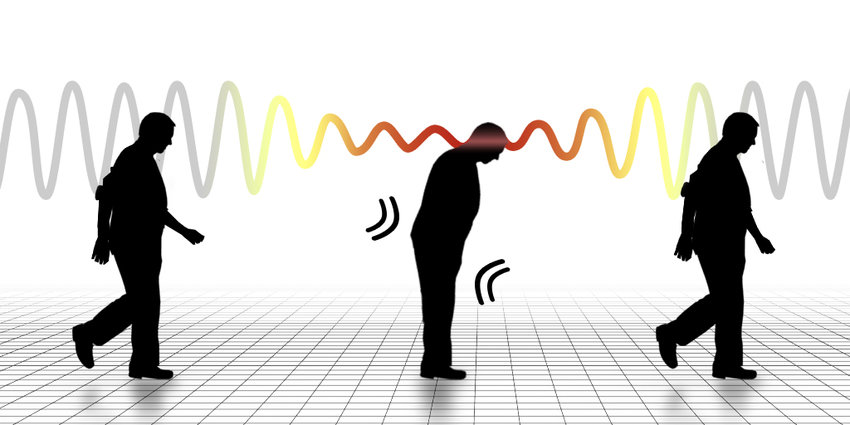What Is Freezing of Gait ?
Gait is a pattern of walking or running that involves the movement of limbs. Any variation in the regular movement pattern of the limbs is described as gait disturbance.
Freezing of gait (FOG) is the inability to move forward for a brief period. It is commonly seen in patients with neurodegenerative diseases such as Parkinson’s/shaking palsy. Freezing of gait is a symptom that occurs most commonly in Parkinson’s disease.
Phenotypes
The phenotypes of FOG include:
- Shuffling with small steps and minimal forward movement
- Trembling of leg but no forward movement
- Complete akinesia- It is a sign that result in a person losing the potential to move their muscles on their own.( it makes a person body completely frozen at times – one of the key symptom observed in Parkison’s disorder)
Causes
The exact cause of frozen gait is not clear, however, earlier studies showed that Freezing may be caused owing to a lesion in the frontal lobe region or frontal basal ganglia connections. Freezing can occur at any time, but it usually arises from a trigger factor that varies from person to person.
Trigger factors are:
- With your first step, when you try to walk.
- When you make a turn
- When you try to move through narrow spaces
- Backwards walking
- Under medication, usually carbidopa/levodopa
The episode of freezing lasts only about 1-2 seconds, but it can be affected by the person’s anxiety level.
Diagnosis of FOG
Freezing of gait can also occur with a lesion in the anterior corpus callosum (thick bundle of nerve fibre region in the brain), so it is important to rule out Parkinson’s and other medical conditions.
There are no specific tests to confirm Parkinson’s disease, but a well-trained neurologist might be able to identify it, based on your medical history and symptoms, with a physical exam.
Recently, the U.S. Food and Health Administration approved the DaT scan, an imaging scan that might give detailed images of the dopaminergic system in the brain.
Freezing Of Gait Assessment
FOG is usually assessed under three states
- “OFF” state-12 hours after without medication
- “ON” state -45-60 mts after intake of usual Levodopa doses
- “SUPRA ON” state –after twice the usual dose
The symptoms of FOG were found to be the highest in the ON state, which further deteriorated in the SUPRA ON state
FOG trajectories obtained during the assessment were used to find the symptoms of FOG under examination. Several triggering circumstances are created until the symptom is demonstrated.
Examination includes:
- 360-degree rapid turns
- Small steps walking
- Stops on command
- Walking through narrow passages
- Cognitive dual tasking
In some patients, FOG is associated with akinesia and festinating gait in which short, shuffling steps are seen.
Treatment
Addressing the symptoms of freezing is important, as they impair mobility and increase the risk of falling. As soon as you notice the symptoms, contact your neurologist to begin treatment.
The first line of treatment is medications that will keep your symptoms at bay. Medications such as levodopa/carbidopa might help to keep your freezing under control.
There are certain ways to help manage freezing on your own that will boost your confidence in handling the situation.
Strategies to minimize freezing at home
- Wear proper shoes that cover toes and heel to avoid a lack of stability
- Focus on your walking and try not to be distracted, which might trigger your Freezing
- Keep your Feet wide when you are changing directions or turning
Other ways to improve a freezing episode if you are stuck to the floor are-:
The 4 S method
- Stop walking or discontinuing an activity that has triggered Freezing
- Stand tall and try to feel body weight between your feet and take a deep breath
- Reposition your body weight side to side
- Step Big
Role Of Physical Therapy In Freezing Giat
Physical therapy takes a comprehensive approach that can augment the patient’s overall health and well-being. It includes:
- Gait training to promote posture and balance with a focus on stride length and walking pattern
- Cueing Techniques are visual and auditory signals used to initiate and maintain movement
- Cognitive rehabilitation is like enforcing mental focus during a motion to improve and overcome freezing episodes
- Flexibility exercises help to move through narrow spaces
- Progressive resistance exercise and strength training to improve muscle strength
- Balance training to help improve the stance and swing phase.
- Robotic-assisted walking
- Obstacle Training
- Mind-body exercises can have a calming effect on the brain that can improve overall well-being
The therapist will design tailored specific exercises to meet individual needs to continue independent rehabilitation and promote long-term improvements.

